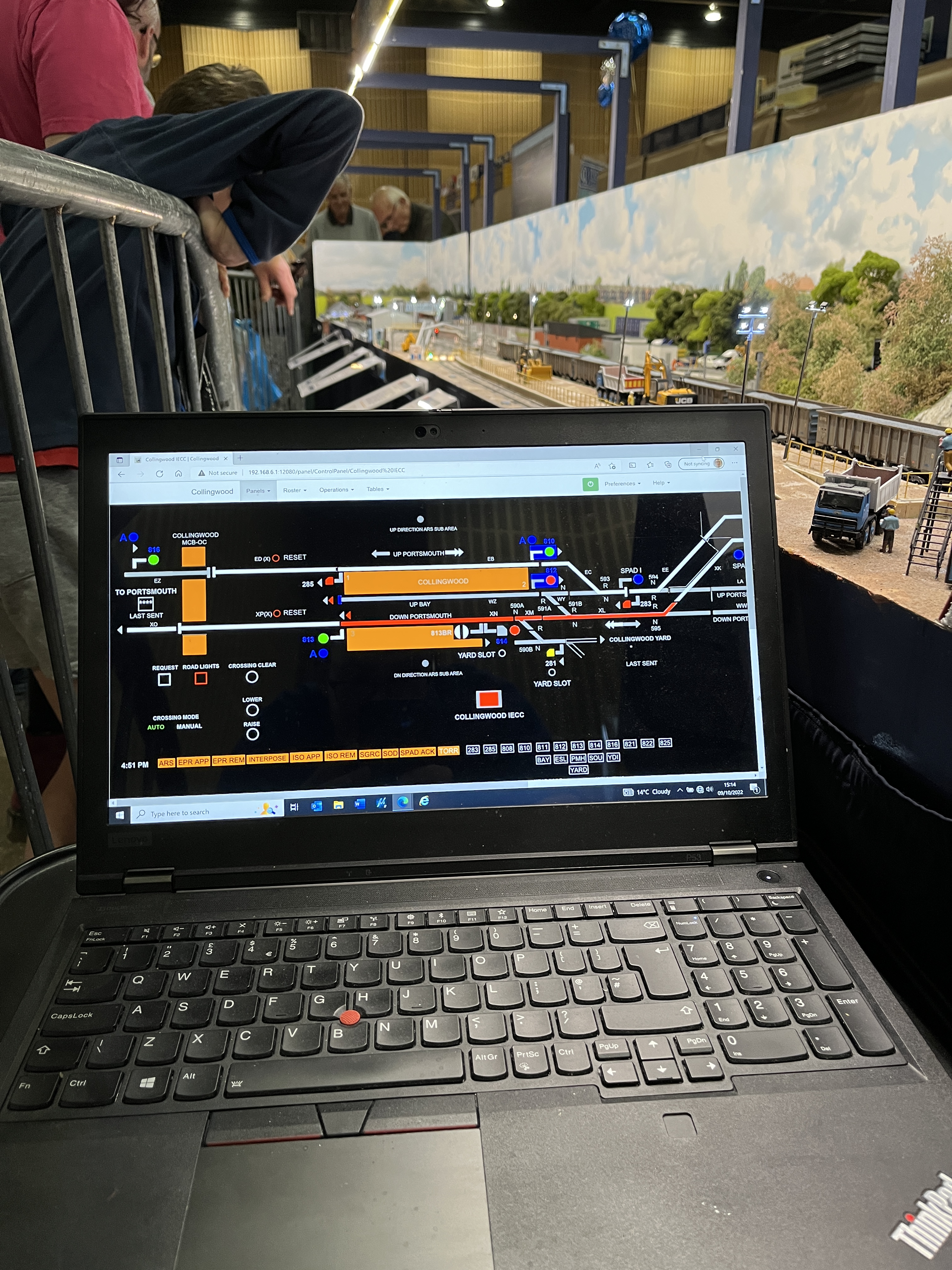On the layout, I’ve included a Level Crossing on the plan to add some interest and audience interaction to the layout and this is controlled by the interlocking and IECC.
The Level Crossing type is a Manually Controlled Barrier – On Call (MCB-OC) Crossing. These are fairly uncommon and are used where the rail traffic over the crossing is far in excess of the road traffic that uses it, meaning that it operates very differently to other types of crossing.

Normally, the crossing barriers are closed to road traffic rather than open to road traffic as per all other level crossings. If a road user wants to cross the crossing, they push a button provided next to the crossing. The initiates a request to the signaller to raise the barriers, at which point the signaller can request the barriers to be raised.


The interlock must check that any routes over the crossing (in this case CD813 A(M) and CD816 A(M)) are normal, the route sectional locking for the track circuits up to and over the crossing (‘XP’ and ‘EZ’) is not applied and that those track circuits are unoccupied. Once these checks have been complete the barriers can open.
The barriers will remain up until the signaller lowers them, either manually using a ‘LOWER’ button on the panel or by setting a route over the crossing. If neither of these happen within two minutes of the barriers being raised, then the signaller is reminded to lower the barriers by an audible warning.
As the barriers are lowering, the Road Traffic Light ‘Wig Wags’ are illuminated and run through the standard light sequence, once the barriers down, the lights extinguish, this is the only time the road lights are illuminated. It should be noted that Road Lights are only used with MCB-OCs by exception technically, but it does seem that every one that has been installed has been provided with them.

Before a signal that reads over the crossing can be cleared, the signaller must confirm that the crossing is clear of people and cars. This would be done via a CCTV camera on the real thing, but this isn’t required on the model.
Once the signaller has confirmed the crossing is clear, they tell the interlocking via the ‘Crossing Clear’ button. To avoid delays in clearing signals, an audible reminder is given to the signaller to push the button once the barriers are lowered.

The model crossing uses Veissman Barriers along with a TrainTech lights & sound module as well as a Adafruit Segment Display for the ‘request’ unit.
These are controlled using an Arduino Nano micro-controller with my own code, with the only communication between it and the VSCS being a ‘Barrier State’ input, the RTL indication on the VSCS being purely based on timers rather than on feedback from the Arduino.


